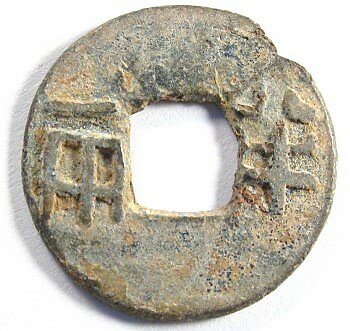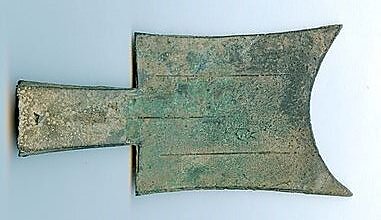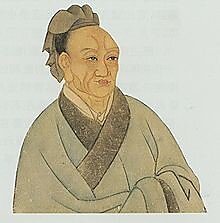During the Western Han Dynasty (206 B.C. – A.D. 9), the question of monetary freedom was vigorously debated. There were as yet no banks or paper money in China — money consisted solely of coin. Private mints competed with government mints, either in the shadow market or legally. In 81 B.C., the issue of whether the state or the market would be the best guardian of sound money came to a head in the famous “Discourses on Salt and Iron,” which were compiled by Huan Kuan in his book Yantie lun. The relevant chapter for our study is chapter 4, “Cuobi” (“Discordant Currencies”).
In this article, I provide some background for the debate between the Confucian scholars who favored private (competitive) coinage and the statesmen, particularly Sang Hongyang, who defended the government’s monopoly on coinage. I then consider the arguments of those engaged in the 81 B.C. debate over the role of government in coinage and the lessons learned.
Background
The first emperor of the Western Han Dynasty, Gaozu (202–195 B.C.), banned government minting, legalized private mints — most likely because of the severe shortage of coins that impeded trade — and adopted the Qin Dynasty’s standardized bronze coin, the banliang (or “half ounce” = 12 zhu).[1] Its relatively heavy weight (about 8 grams) made it unsuitable for widespread use. The demand for lighter coins to facilitate trade led private mints to produce a large quantity of lighter “elm-seed” coins that weighed 0.2 to 1.5 grams. Those coins retained the conventional banliang inscription, making their face value much greater than their intrinsic value.[2] Of course, merchants would not accept them at face value.
In 186 B.C., Empress Lü reinstituted the Imperial Mint with the hope of gaining control over the monetary system. The first coin brought out by the government was a banliang coin weighing 8 zhu. Next, in 182 B.C., a new banliang coin called the wufen, which weighed only 2.4 zhu, was circulated. The demonetization of the 8 zhu coins, which allowed bronze to be restruck into a much larger nominal stock of money, led to inflation. Consequently, in 175 B.C., Emperor Wen of Han increased the metallic content of the banliang to 4 zhu, and once again allowed private mints the freedom to coin money provided they complied with the standard weight of 4 zhu and produced only bronze coins. The see-saw between government and private mints continued when, in 144 B.C., Emperor Jing of Han ended competitive coinage and reinstituted the government’s monopoly. Private coining was made a crime and those convicted could face the death penalty.[3]
The substantial difference between the face value and intrinsic value of banliang coins during the early Han period provided fertile ground for counterfeiting. However, money exchanges developed to discover the true value of banliang coins, adjusting their nominal value to reflect their weight (or intrinsic value), rather than passively accepting the fictitious value of 12 zhu. Eventually, in 120 B.C., a new bronze coin, the 3 zhu cash coin, replaced the old 4 zhu banliang coin — and its face value was made equal to its intrinsic value. Finally, in 119 B.C., Emperor Wu of Han introduced the wuzhu (or 5 zhu) bronze coin, which was extensively used until the 7th century.
At first, the wuzhu was minted by both the central government and the prefectures, but in 113 B.C. minting became the sole responsibility of the Imperial Mint.[4]
The 81 B.C. Debate Over Monetary Freedom
When Emperor Wen of Han legalized private mints in 175 B.C., Jia Yi, a former official, argued that competitive coinage would lead to debasement, a plethora of cash coins that would confuse the public, and result in the manipulation of money exchanges. He therefore recommended restoring the state monopoly on coinage and controlling the supply of copper.[5] His advice was rejected but the debate over private coinage reemerged in 81 B.C.
The Main Arguments
Sang Hongyang, a statesman who had been a key advisor to Emperor Wu, took the lead role in arguing against private coinage and in support of government monopoly. Meanwhile, more than 60 Confucian scholars (literati) from across China made the case for monetary freedom as the best way to provide sound coinage.
In his argument against monetary freedom, Sang Hongyang contended: “If the currency system is unified under the emperor’s control, the people will not serve two masters [the state and the market]. If coin issues from the ruler, the people will have no doubts about whether it is genuine or not.”[6]
The literati, who favored economic freedom, as opposed to the interventionist policies initiated by Emperor Wu, disputed that argument:
In high antiquity, numerous forms of currency existed, wealth circulated, and the people were happy. Later, when the old types of currency were replaced with silver coins inscribed with tortoises and dragons, the people became deeply suspicious of the new coins. The more often the currency system changes, the more suspicious the people become.
Subsequently, all the old currencies circulating throughout the realm were demonetized and sole authority to mint coin was vested in the Three Officers of the Intendancy of Natural Resources. Officials and artisans alike steal from the profits of the mint. Moreover, they fail to ensure that coins are made to exact standards; some coins are too thin or too thick, too heavy or too light. Farmers are not expert at perceiving the qualitative differences between different coins. When comparing one coin to another, they trust the old coins but harbor suspicions about the new ones, without really knowing which is genuine and which is false. Merchants and shopkeepers pass off bad coins in exchange for good, taking in coins worth double their face value while fobbing off debased ones. … If people must discriminate between different types of coin, then trade will be harmed, and consumers in particular will suffer.
Therefore, the sovereign provides for the people’s welfare by not restricting the use of natural resources … [and] he facilitates the use of currency by not prohibiting people from freely minting coins.[7]
It is clear from these passages that the literati based their case for monetary freedom on sound economics and the positive consequences competitive coinage was expected to have on human welfare. As Richard von Glahn, an eminent historian of Chinese monetary history, notes,
The Confucian scholars arrayed in opposition to Emperor Wu’s policies of state intervention in the economy rejected the contention that a state monopoly on coinage is the best defense of sound money. The market, they suggested, will compel private coiners to maintain proper standards of size, weight, and purity. A state monopoly on coinage, in contrast, allowed the state to debase its own coin with impunity.[8]
They also thought that, from an ethical view point, a government monopoly is unjust, because it prevents free competition and allows officials to use their power to debase the currency for personal gain.
Although the literati had ethics, history, and logic on their side, they were unable to end the state monopoly on coinage. Government officials’ inclination to abuse their power by manipulating the monetary system for fiscal purposes and their own profit was simply too strong. Consequently, “the court debate in 81 B.C. marked the last serious challenge to the principle of a [monopoly] sovereign currency.”[9]
A Catallactic View of Money
The proponents of competitive coinage held a catallactic (i.e., exchange) view of money. They held that money, as a medium of exchange, evolved from commodities that had an exchange value in barter economies. The literati argued: “The ancients had marketplaces but no coinage. Everyone exchanged what they had for what they lacked .… In later ages, tortoise and cowrie shells, gold, and bronze coins emerged as the media of exchange.”[10] They did so because those commodities had a nonmonetary value, were scarce enough and durable enough to serve as money, and engendered the people’s trust—not because the sovereign mandated their use as money. In Mengerian terms , they had wide “marketability” — not just personal use value.[11]
The Confucian scholars who participated in the 81 B.C. debate over coinage no doubt were familiar with the writings of Sima Qian (c. 145–86 B.C.), the “Grand Historian,” who wrote: “When farmers, artisans, and merchants first began to exchange articles among themselves, manifold forms of currency — tortoise and cowrie shells, gold and bronze coin, and knife-shaped and spade-shaped money — came into being.”[12]
Sima Qian, the Grand Historian
According to von Glahn, Sima Qian and Confucian scholars “evoked an image of a spontaneous emergence of the market as a reproof of meddlesome rulers who manipulated the currency system for their own profit.”[13] However, while Sima Qian criticized government intervention, he did not favor private coinage, which he thought could be disruptive.[14]
The catallactic (market-based) doctrine of the origin of money was not widely shared. Most authorities rejected it in favor of the long-held chartalist view that money originated from rulers who sought to improve the welfare of their people. As expressed in the Guanzi (a book by Guan Zhong, a 7th century B.C. statesman): “Tang [mythical founder of the Shang Dynasty] used the metal of Mount Zhuang, and Yu [founder of the Xia Dynasty] took the metal of Mount Li, to cast money, which they employed to redeem the children from bondage.”[15]
Lessons
A study of the monetary history of the Western Han Dynasty is instructive in showing the tension between state power and private initiative in meeting the demand for currency as the economy and population grow. Government officials’ inclination to abuse their power when they have a monopoly on coinage is evident during the early Han Dynasty, as is the monetary chaos that can occur when there is a lack of a genuine rule of law.
The court debate in 81 B.C. shows that there was support for competitive coinage and that the literati from across China believed that, under just laws that were enforced, private mints could bring about monetary harmony. The debate also shed light on the importance of market forces in understanding the origin (or early history) of money. They thus give us another bit of evidence in the long-standing controversy over the state theory of money (chartalism) and the exchange (catallactic) theory of money, also known as “metallism”.[16]
_________________
[1] Nishijima Sadao, “The Economic and Social History of Former Han,” p. 586; in The Cambridge History of China: Volume 1, The Ch’in [Qin] and Han Empires, 221 B.C.–A.D. 220, edited by Denis Twichett and Michael Loewe, New York: Cambridge University Press, 1986.
The Han banliang was effectively a monetary unit, the actual metallic equivalent for which tended to change over time, while the zhu was a stable weight unit, equivalent to so many grams. Thus coins that bore a banliang value were given a nominal rating equal to12 zhu/banliang. The difference between the nominal and actual value was the difference between that rating and the coins actual weight in zhu. For an excellent history of coinage during the Qin and Western Han Dynasties, see http://www.calgarycoin.com/reference/china/china2.htm.
[2] Nishijima, p. 586.
[3] Ibid.; see also Richard von Glahn, Fountain of Fortune: Money and Monetary Policy in China, 1000–1700, p. 35, Los Angeles: University of California Press, 1996.
[4] Nishijima, p. 587; Walter Scheidel, “The Monetary Systems of the Han and Roman Empires,” Princeton/Stanford Working Papers in Classics, Paper No. 110505 (February 2008), p. 8.
[5] Jia Yi’s commentary was preserved in the Hanshu (History of the Former Han) compiled by Ban Biao, Ban Gu, and Ban Zhao. It appeared in 111 A.D. See Scheidel, p. 8.
[6] Huan Kuan, Yantie lun, 4, “Cuobi,” p. 16; English translation in von Glahn, p. 36.
[7] Yantie lun, pp. 16–17; in von Glahn, pp. 36–37. “Currency” refers to so-called cash coins, not to paper currency.
[8] Von Glahn, Fountain of Fortune, p. 36.
[9] Ibid., p. 37.
[10] Yantie lun, p. 16.; in von Glahn, p. 27.
[11] See Carl Menger, Principles of Economics (1871), chap. 8, “The Theory of Money.” Translated by J. Dingwall and B. F. Hoselitz, with an introduction by Friedrich A. Hayek. New York: New York University Press, 1981.
[12] Sima Qian, Shiji (Records of the Grand Historian), 30.1442. Beijing ed.; von Glahn, p. 26.
[13] Von Glahn, p. 27.
[14] Ibid., p. 35.
[15] Guanzi, 75, “Shanquanshu,” III: 73 (Guoxue jiben congshu edition); in von Glahn, p. 26. Accordingly, von Glahn (p. 28) notes: “By the late imperial times, the Guanzi version of the origin of money prevailed over catallactic theories.”
[16] On the case against chartalism (also known as cartelism), see Lawrence H. White, “Why the ‘State Theory of Money’ Doesn’t Explain the Coinage of Precious Metals,” Alt‑M (August 24, 2017), and George Selgin, “‘Lord Keynes’ Contra White on the Beginnings of Coinage,” Alt‑M (August 30, 2017).





